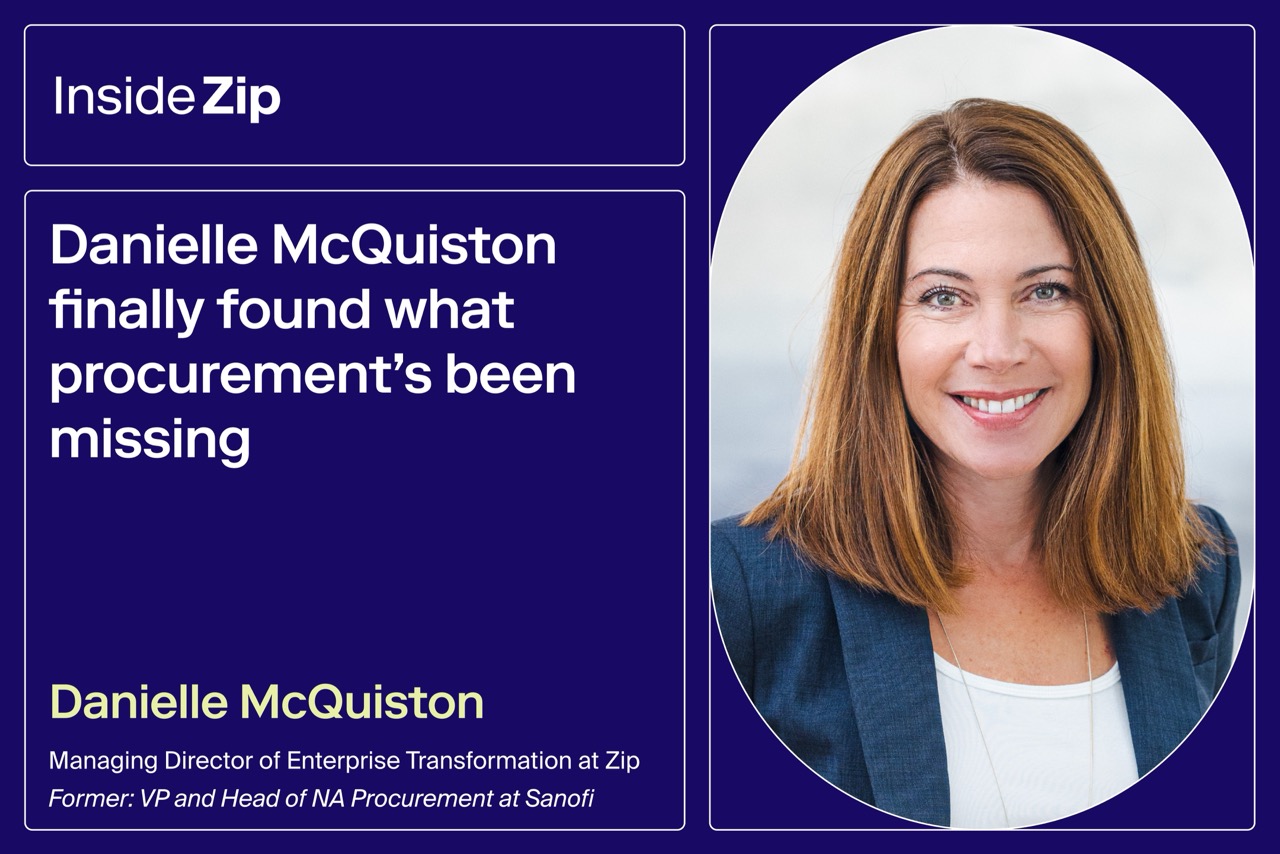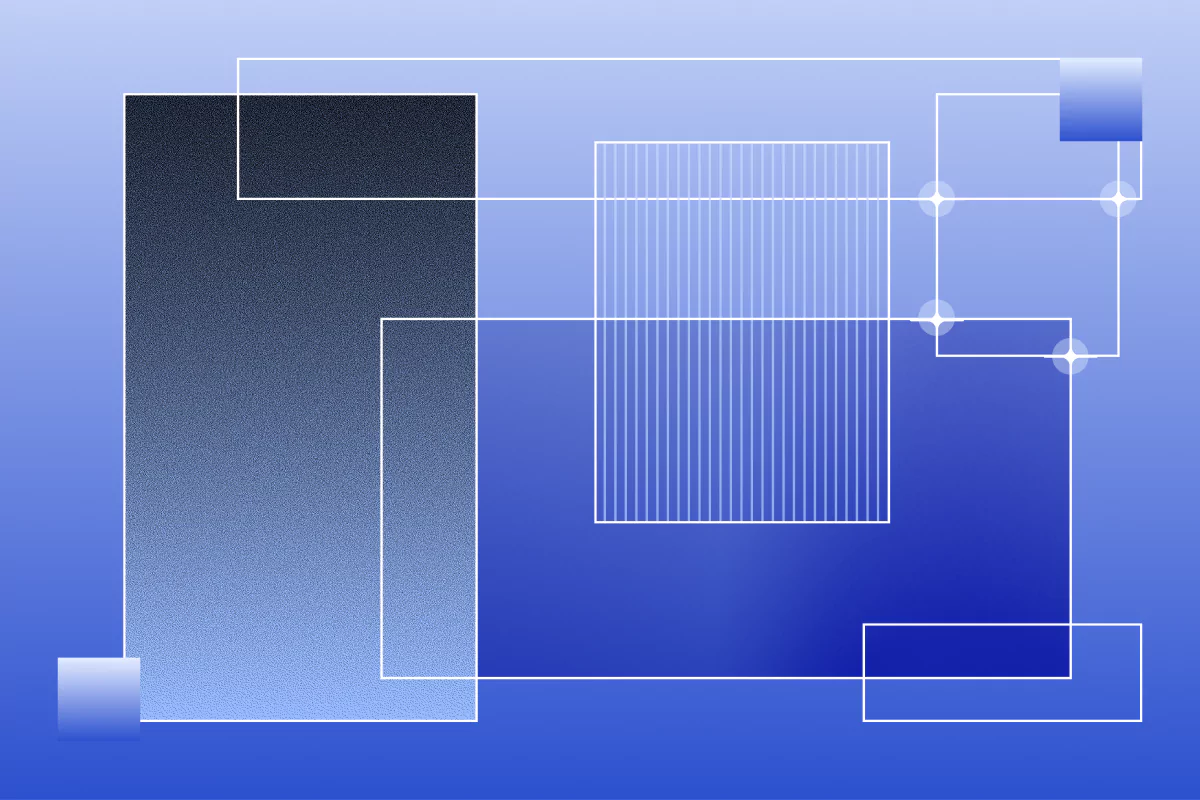.webp)
Mastering IT Procurement: A guide to success
Learn to align IT procurement with strategic goals for impact and efficiency.

IT procurement is the process through which businesses identify, source, and acquire technology solutions, ranging from software and hardware to IT services and IT infrastructure.
It’s the backbone of a growing technology stack, allowing employees across the organization—from legal reviewers to procurement officers—to deeply understand the spend and impact of IT spending.
This guide takes a look at the intricacies of IT procurement, offering actionable insights and strategies for enhancing efficiency and aligning with strategic business objectives. It’ll also demonstrate why Zip is an ideal solution for procurement, automating and tying together systems across the procurement process of organizations at any scale.
What is information technology (IT) procurement?
IT procurement involves the systematic approach of strategic sourcing, acquiring, and managing IT assets and services that businesses require to operate effectively. This process can vary widely in scope, from single-department software upgrades to company-wide technology overhauls.
In today’s fast-paced, digitally-driven market, IT procurement is not just a purchasing activity but a strategic function that integrates business, finance, and technological needs. This alignment is essential for achieving operational excellence and driving innovation.
For instance, when a company decides to upgrade its CRM system, it’s easy to assume this is just the purchasing of software—however, it’s better to think of it as an investment in a tool that can enhance customer interactions, data analysis, and sales processes, directly impacting the bottom line.
More consideration is therefore required when understanding how impactful a simple ‘software purchase’ can be.
The IT procurement lifecycle
As Nick Heinzmann, Head of Research at Zip noted in his Margin Makers newsletter, many companies “have made hefty investments in procuretech solutions hoping to transform their organizations, only to stumble on the fundamentals.”
This is something we see time and time again. It’s not enough to implement a powerful P2P software solution—you have to go through the basics, tried and tested, to properly initiate an impactful procurement process. Here are the steps to optimizing your IT procurement lifecycle.
1. Identify technological hardware and software needs
Before any of this can begin, however, it’s important to define what technology is necessary, and why. Your procurement team should know the answers to these questions:
- What will this technology accomplish within your organization?
- How are current solutions falling short?
- Who will use this technology, and how often?
- What are the must-have features, and what features are negotiable?
- Does this need to integrate with existing technologies?
- What are the budget constraints?
2. Review the existing tech stack
Review your current technology stack to determine if existing solutions can be upgraded or if new acquisitions are necessary. You may consider auditing your current SaaS licenses and hardware to avoid redundancies and ensure compatibility. No one wants to pay for the same software twice!
3. Perform a make-or-buy analysis
Decide whether to develop a custom solution internally or purchase from an external vendor. Think about factors like cost, support, and time to deployment to get a firm grasp on whether you should buy a piece of software, or just build it in-house.
4. Perhaps market research
Conduct thorough research to identify potential vendors that match your technology criteria. This is helpful because it’ll assist you in understanding the vendor landscape and the various types of offerings available.
5. Create and monitor a corresponding RFP
Develop a detailed Request for Proposal (RFP) that outlines your technological needs, expectations, and criteria for vendor selection. The RFP should be clear and concise to attract appropriate vendor responses.
You can also consider a Request for Information (RFI) if you’re not quite sure where to start. An RFI which provides a preliminary overview of potential vendors’ capabilities and services, helpful during the information gathering phase.
Here’s a handy guide to learn more about the difference between an RFI vs. an RFP vs. an RFQ.
6. Identify, review, and select a vendor
From the proposals received, identify and assess potential vendors based on their ability to meet your specific requirements, their market reputation, supply chain effectiveness, and their alignment with your business goals. Keep track of them in your vendor management software to maintain relationships and track KPIs.
7. Negotiate Terms
Engage with the chosen vendors to negotiate cost-effective terms that protect your interests and maximize value. Once agreed, finalize contracts that clearly state the service level agreements, deliverables, timelines, and costs involved. Remember, it’s also important to consider long-term partnerships beyond just optimization for pricing in the short-term.
8. Sign and submit contracts
After signing the contract, work closely with the vendor to implement the technology. Congratulations! You’ve got new software solutions. Now think about training, integration with existing systems, asset management and the continual monitoring for performance against agreed-upon metrics.
Who owns IT procurement?
IT procurement roles are typically housed within an organization’s procurement or IT department, reflecting the interdisciplinary nature of technology acquisition. Key positions you might come across:
- IT Procurement Manager: Oversees the IT procurement process, ensuring alignment with organizational strategies and managing vendor relationships.
- IT Procurement Specialist: Focuses on the tactical aspects of IT procurement such as negotiating contracts and managing supplier relationships.
- IT Procurement Analyst: Provides analytical support by assessing technology needs and market trends to inform procurement decisions.
Professionals in these roles must possess a deep understanding of both the technological and business aspects of the IT products they acquire. They need to ensure that technology solutions not only meet functional requirements but also align with the organization’s strategic goals and provide a user-friendly experience.
Why IT procurement matters
Technology is integral to modern business operations, impacting everything from daily employee tasks to overall corporate strategy. Efficient and effective IT procurement is required because outdated systems can severely hinder a company’s ability to grow and remain competitive.
Risks of Inadequate IT Procurement
- Rogue IT: Occurs when employees independently purchase and use technology without approval, leading to security vulnerabilities and inefficiencies.
- Shadow IT: Involves the use of systems and solutions not authorized by the organization, often because the official procurement process is seen as too slow or cumbersome.
- Maverick IT: Refers to spending that bypasses agreed-upon procurement policies, potentially resulting in overspending and inadequate solutions.
Addressing these issues through structured IT procurement processes is extremely important to keep stakeholders informed. By centralizing technology procurement, organizations can mitigate risks, enhance security, and ensure that investments are aligned with business needs.
IT procurement best practices
To maximize your IT procurement impact, organizations should adopt these recommended best practices that streamline processes and ensure the best investments in your time and technology.
Track and report ROI
Regularly measure and report on the return on investment (ROI) from IT procurement activities. This is help prove how IT procurement monitors success and identifies areas for improvement.
Prioritize integration
Ensure that new IT solutions integrate seamlessly with existing systems. This reduces the learning curve, maximizes user adoption, and enhances the overall value of new tech and apps.
In fact, consider Zip’s approach to ‘Procurement Orchestration’, a fully integrated procurement platform that integrates disparate best-of-breed technologies so that every team across the procurement process is able to work within their preferred tooling, across parallel workflows.
Ensure accurate data
Maintain accurate and up-to-date information across all IT systems. This facilitates better decision-making, supports compliance efforts, and enhances the effectiveness of IT procurement.
Leverage automation
Automate routine procurement tasks such as RFP, RFQ, and purchase order management. Automation not only speeds up the procurement process but also reduces errors, freeing up valuable resources to focus on strategic tasks.
Harnessing automation with Zip for streamlined IT Procurement
Throughout this guide, we've explored the strategic importance of IT procurement, the lifecycle of procurement activities, and the organizational roles involved. We’ve also addressed the significant impact that effective IT procurement has on a company’s technology landscape and overall success.
Automation emerges as a singularly effective element in enhancing IT procurement processes. It not only simplifies the complexities associated with procurement but also ensures accuracy and speed, factors so important in today’s fast-paced business environment.
Zip’s role in enhancing IT Procurement through automation
Zip offers sophisticated solutions that harness the power of automation to revolutionize IT procurement:
- Internal Controls on One Platform: Zip simplifies and automates procurement controls, making it easy for employees to comply with IT purchasing policies without manual oversight.
- Full AP Visibility: With Zip, finance leaders gain real-time visibility into the accounts payable process. This is achieved by centralizing approval workflows and integrating them with risk and financial data for enhanced transparency and control.
- Scale Financial Processes: Zip automates the capture of essential purchase, vendor, invoice, and payment data, significantly reducing the time spent on accounts payable cycles and optimizing financial operations.
- End Manual Invoice Processing: By using advanced technologies to intelligently scan, capture, and validate invoices, Zip cuts invoice processing times by half, ensuring that finance departments have access to the necessary data promptly.
To see how Zip can transform your IT procurement strategy, we invite you to request a demo today. Experience firsthand how our tools can simplify and enhance your procurement operations, driving significant cost savings and operational efficiencies.

Maximize the ROI of your business spend

Enter your business email to keep reading



























.webp)




















.avif)













.avif)















.avif)












.avif)
